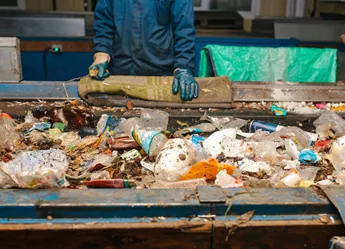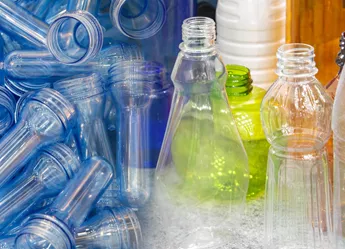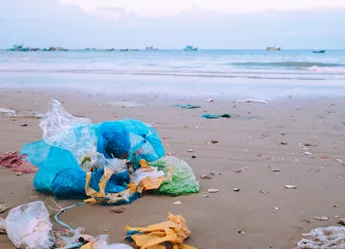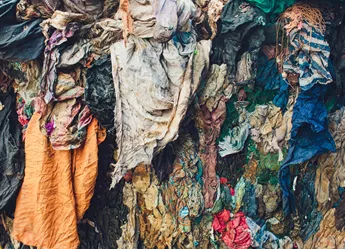With the state of the environment very much on people’s minds these days, we’re all starting to think a lot harder about what we’re throwing away. That goes for more than just individual consumers, naturally. Entire industries are rethinking their approach to waste and sustainability, and it’s beginning to have an effect.

The manufacturing sector, whose reputation for dealing with waste hasn’t always been great, is making a much better name for itself recently, with a lot of thought and work going into bringing down the amount of waste materials it produces each year.
Manufacturers of all sizes are moving toward more sustainable products and processes – due in no small part to the changing awareness and expectations of their customers. While typical consumers traditionally react pretty poorly to guilt-trip techniques designed to stop them from doing or buying the things they enjoy, giving them a more sustainable option does frequently see them move in the right direction.
There’s definitely a market for less wasteful practices in manufacturing, and the industry’s starting to catch on. In sectors like fashion, sustainable methods are becoming the proverbial “better mousetrap”, drawing in customers with what they increasingly recognise as an important selling point.
Obviously, this move toward sustainability can be a rocky road for some manufacturers to travel. A business can’t simply declare itself “sustainable” and expect its entire supply chain to fall in line. It means tracking down appropriate suppliers and materials, along with changing established practices throughout the company itself. Suppliers, in particular, are still a little thin on the ground in some specialist areas, potentially driving prices up.
While the appetite of consumers for sustainable products is reasonably well established, it’s still an open question as to how much a “green conscience” is worth to any given individual. What’s interesting here is the number of businesses willing to swallow the costs of the changes they’re making without passing the whole bill onto their customers.
At the very least, with the Intergovernmental Panel on Climate Change warning that there’s little over a decade left to tackle the issue effectively, it’s encouraging how many major brands are opening up the conversation about sustainability.

Sticking with the fast-moving and relatively agile fashion sector, there’s an impressive amount of innovation going on around sustainability. Looking beyond simply doing more with less, businesses are looking more closely at, and thinking more broadly about, addressing the industry’s waste problem. For some, that actually means looking backward rather than forward for inspiration.
The Latin American influence of ethical womenswear firm Zurita draws from Andean designs that cut out the material waste of more conventional methods. For other businesses, the innovation comes from making productive use of other firms’ “waste” off-cuts or otherwise unsellable garments. Even lesser grades of material rejected by other buyers can still be made into desirable end products with the right level of inventiveness.
In some cases, those materials needn’t even come from the fashion industry itself. Korean brand Re;code is literally taking industrial waste materials from the car industry and turning them into designer clothing and accessories.

One of the toughest nuts to crack for a green revolution has been single-use plastics. Despite only coming into widespread industrial use around half a century ago, plastic has since taken root in virtually every area of modern life.
Over 300 million tonnes of plastic are produced globally each year, and almost half of it is discarded after a single use. That level of production takes immense natural resources to maintain, and is doing undeniable and measurable harm.
46 billion plastic bottles are produced every year - almost 1,500 a second – and while a single bottle only exists in a consumer’s life for a matter of minutes, it can easily take as much as 450 years to decompose after disposal.
Recycling, as a comparatively costly and occasionally problematic process in itself, can only go so far in solving the issue. Meanwhile, discarded one-use plastics are finding their way into the habitats of animals all over the world. Millions of tonnes of the stuff are dropped into the ocean per year, with current estimates indicating that it will literally outweigh the global fish population by 2050.
Of course, it doesn’t stop with bottles. Single-use carrier bags have also been highlighted as particular hazards for the environment. Reports last year suggested that the 5p charge applied to plastic bags should double, given the success of the scheme in reducing plastic bag waste. In July 2018, the 7 largest UK supermarkets reported a drop of 86% in plastic bag use since the charge began, while the money brought in pumped close to £60 million into good causes. All the signs are pointing to a genuine change in the way customers think about single-use bags. That 5p charge, modest as it seems, is enough to bring the issue of sustainability into people’s minds. It’s a small step to take, but an essential one all the same.

For an example of consumers themselves driving a move away from waste, you only have to look at the plastic microbeads used in cosmetics and toothpaste. These “micro-plastics” have a number of issues associated with them. For one thing, there’s a human health aspect to consider. Toothpaste microbeads, for example, have the potential to get trapped under a user’s gums, leading to gingivitis. Microbeads getting into the human food chain via fish, for instance, raise a number of serious concerns. Micro-plastics now pollute water bodies all over the world, attracting other pollutants with the capacity to absorb up to a million times more toxic chemicals than the water they contaminate.

In response to these concerns, and the widespread public awareness of the dangers, plastic microbeads have been banned for various purposes in a number of countries. As is often seen with issues like this, the more the public is aware of a problem, the more they turn away from wasteful options when more sustainable alternatives are presented. The demand for sustainable products is there, but it can be a leap of faith for many businesses to offer that crucial better choice.
What this all boils down to is that, even with the current focus on building less wasteful, more sustainable industries, there’s still a long way to go before we reach a zero-waste future. There’s been a real, demonstrable change in consumer behaviour and expectations – particularly when it comes to manufacturing – which is extremely encouraging to see. As always, though, businesses need to lean hard into innovation to take advantage of the expanding demand for sustainable goods.
Sustainability isn’t just “good karma”, it’s good business as well. Paying lip service to investing in zero-waste is all very well - but to gain the very real advantages on offer, at some point you’ve got to put your money where your mouth is. This means minimising the risks and maximising the returns of your R&D. That’s the mission at RIFT, and it’s why we work so hard to ensure that innovation always pays off.
The RIFT R&D team are on hand to put full momentum behind your R&D claim, helping you understand what costs qualify for R&D and managing the whole Research & Development claim process for you. Putting our expertise to use, you can reap the invaluable rewards of the UK R&D scheme while focusing on the day-to-day running of your business.

